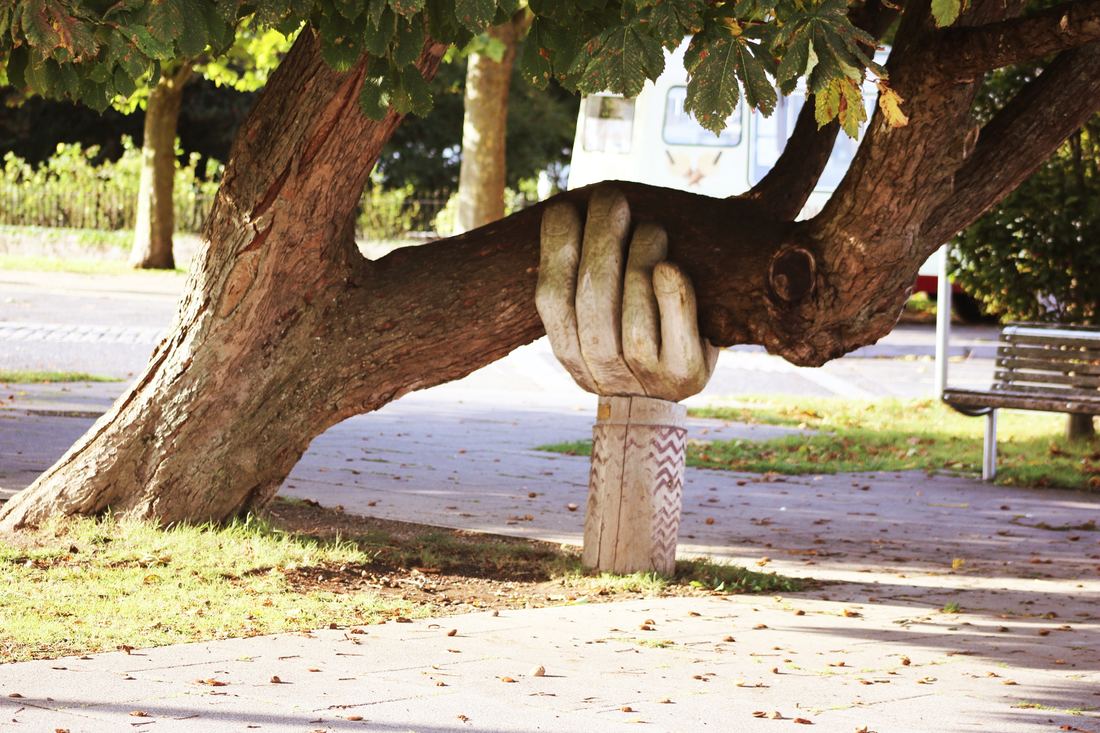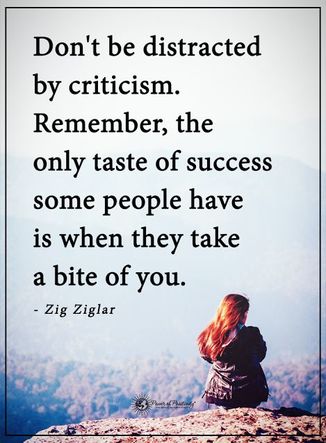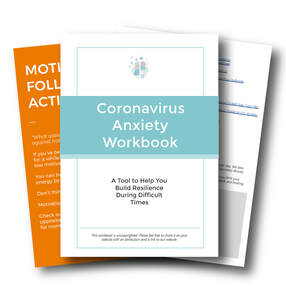|
By Guest Blogger: Chris Hassan
Sometimes, external pressures and major life events can drive a person to seek destructive coping mechanisms, which could increase the risk of developing a mental illness. Both substance abuse and anxiety can have serious consequences for the body, but you might be surprised to know that yoga can be an effective tool in recovery. Substance abuse attacks neurotransmitters in the brain. While a drug habit may start out as a race for dopamine, continued use through injection, inhalation or ingestion can cause dependence and even cycles of depression. Nervousness and tension from an encounter with addictive substances can have detrimental effects on the neck, shoulders and other muscles, as well as increase your risk of insomnia and other illnesses. The consequences can still affect the body even if a person achieves sobriety. Addiction recovery is a complicated journey but practicing yoga can assist with the process. Along with a series of health benefits, yoga has been found to ease anxiety by decreasing cortisol levels, the primary stress hormone. By listening to the body through calculated stretching, you can also achieve higher impulse control. Yoga’s success relies on developing an elevated sense of mindfulness. Focusing on breathing helps identify the areas that hold the most tension. The philosophy of yoga revolves around calming the mind and balancing the nervous system, which can serve as a catalyst for mental and physical healing. By using yoga as a supplemental therapy to traditional treatments, physical sensations are reintroduced to the body and natural stress responses are rewired. Practicing yoga can emphasize healthy coping skills and tolerance for discomfort, replacing self-medication through drugs and alcohol. Learn more about the benefits of yoga for addiction recovery with the accompanying infographic yoga-addiction-recovery.pdf. Chris Hassan is President and CEO of Symetria Health® — the country’s first comprehensive evidence-based opioid addiction treatment program, designed to deliver data-validated outcomes that outperform other treatments currently available. He has over 25 years of experience in the field of addiction treatment, is active on several national panels and corporate boards, while also serving as a Huffington Post contributor.
0 Comments
By Guest Blogger: Michelle Peterson
Recovering from an addiction is incredibly difficult. And, with so many recovery programs out there, how do you choose the right one for you? Art and music therapy are two types of programs that can help recovering addicts relieve stress and promote self-confidence. You can incorporate these supplemental activities into your recovery practice and walk away feeling like a new person. Here are a few different types of art and music therapies that can help you get through your addiction. Learning an instrument Learning how to play a musical instrument is incredibly difficult. It takes persistence, commitment and patience. When someone is recovering from an addiction, learning how to play guitar, drums or another instrument can help them stay focused and discover a whole new side of themselves. Sticking through lessons can teach them how to commit to recovery and to not relapse. They will also leave therapy with a sense of accomplishment and a new skill they can use to entertain family members and loved ones. Painting Painting is a type of art therapy that can come in many forms. Whether it’s watercolor, acrylic, or oils, painting is a wonderful way for those suffering with addiction to cope. Not only is painting a quiet, soothing activity, it allows an artist to bring out whatever emotions they’re dealing with onto the paper or canvas and leave it there. Because drugs and alcohol can dull a person’s emotions, painting can bring you back to yourself, little by little. Sculpting Another type of art therapy, sculpting allows addicts to reshape their lives while they make something out of nothing. Sculpting can bring stress relief and improve overall well-being. It’s a type of meditation, as sculpting can take hours on end. With sculpting, there are no right or wrong ways to make a piece of art, which is helpful to addicts as they can access their inner creativity and surprise themselves. Sculpting is something that anyone can try out and it appeals to a lot of different individuals. Who doesn’t want to take home with them a sculpture that they created? Dancing Dancing is a type of music therapy and form of self-expression that can help individuals recovering from addiction. The primary goal of this type of movement is to promote physical, emotional and mental health. By being able to express yourself openly and freely in a supportive environment, you can take steps to healing and confronting the demons of addiction. When it’s hard to express yourself with words, dancing is a great way to get rid of any feelings of self-doubt and other painful issues. Writing poetry It can be hard to express your feelings out loud when you’re going through addiction recovery. That’s why writing down your thoughts and emotions on paper is a great way to relieve stress, especially if written thoughts are transformed in poetry. This type of art therapy allows addicts to discover their creativity and tell their own story in a beautiful way. Poems are easy to keep, and if an addict is every experiencing self-doubt or weakness, they can re-read their poems and gain back their strength. If you need more than group therapy and a traditional rehabilitation program, add in art or music therapy to your recovery to help you get more in touch with your emotions and express yourself. Art and music therapy is also typically performed solo, so the individual doesn’t feel embarrassed speaking about their emotions in front of other addicts like in a therapy session. Art and music therapy provide addicts with a different opportunity to find solace and see what they’re made of. Right now, you may be experiencing some anxiety, depression, or a mix of both. And, if you are working more than ever due to the COVID-19 pandemic, you may be experiencing some level of burnout because you are on the front lines serving as a doctor, nurse, doula, midwife, cashier, stock clerk, mail carrier, factory worker, pharmacist, etc.. Your services are needed more than ever. It can truly take a toll on you physically and emotionally, where you are struggling with how to provide self-care for yourself.
Whether you are on the front line or an entrepreneur, this type of stress can wear and tear on you after a while. Burn-out is an occupational phenomenon and a condition resulting from chronic workplace stress that has not been successfully managed. When trying to prevent burn out, remember no two people are alike, so you can try a combination of regular exercise, practicing relaxation techniques, hobbies, or learning new coping strategies to deal with stress. The most important thing is to put aside some uninterrupted time to check in with yourself and how you're feeling. You can check in with yourself by doing a body scan, which includes identifying where, in your body, you feel, or are experiencing aches, pains, and other symptoms that may indicate the need for stress management. Ignoring the crucial clues that your body is trying to communicate to you continues the unnecessary suffering and need to implement necessary lifestyle changes. There are a variety of burnouts, so different symptoms require different solutions. One intervention can be practicing targeted self-care! Self-care varies and looks different from person to person. Generally, self-care involves engaging in behaviors or activities that promote health and well-being to feel better physically and emotionally. However, humans are more than their physical body and emotions. I like to approach self-care from a model I coined as the "PEMSS" model - a holistic approach that is targeted for your specific needs when feeling burnout in these five areas: Physical, Emotional, Mental, Social and Spiritual. When you assess yourself for burnout accurately, you can implement applicable, direct self-care that will leave you recharged and rejuvenated. Looking at self-care from this approach will eradicate the challenge of identifying self-care behaviors that are ineffective for maintaining personal and professional well-being in the face of the unique demands of work and the current pandemic. If you are fine physically, but emotionally burnt-out, identify which of your emotions are running high or low impacting your mood. You could practice self-compassion with gentle, affirming words you say to yourself. You could practice self-compassion by taking the time to complete tasks. You could watch a funny movie to make you laugh. For pet lovers, cuddle with your pet to increase positive emotions. If you are fine emotionally but are physically burnt-out, try unplugging from social media to rest your mind. Based on the climate right now, you may not be able to take time off from work, but instead, you can read a good book to help shift your mind away from the pandemic. Not everyone likes to journal and practice self-reflection, however, thought dumping or journaling can be very therapeutic. I would also suggest drawing, coloring, doodling, doing a Zentangle, painting, listening to your favorite music, monitor your screen time (computers, phone, television) as needed, watch a funny movie and most of all, ask for help and be open to receiving it. If you need spiritual self-care, pray and meditate in a space, even if it is your bathroom, to align and anchor yourself spiritually. If you have a patio or porch, do it outside in nature and practice deep breathing and relaxation before going to work and before bed. Since we are all practicing social distance, you may be feeling more disconnected than ever. If you need social self-care, schedule a zoom call with family, friends, and associates over coffee, lunch, or dinner to talk. Avoid talking about the pandemic and work. Shift your energy to something positive that will leave you both feeling recharged and rejuvenated. Lastly, set boundaries with your supervisor, co-workers, and/or staff. Sometimes, we do not know how to treat ourselves, overdo things, and push ourselves past a healthy limit. The choices we make are sometimes not made in our own best interest even when we want to say or do otherwise. When you set boundaries with yourself, you learn how to monitor your behavior and create a healthy structure for your life overall so it can run smoother. You are literally identifying what is "good" for you and what is not. Self-boundaries also help with avoiding burnout. Here are 16 questions to consider for targeted self-care:
In this unprecedented period of global uncertainty, we felt it was necessary to put together a coronavirus anxiety workbook to provide our community with much needed support. This is an online version of the PDF workbook which you can download for free above.
The first thing to note right now is that it’s completely normal to be experiencing a wide range of emotions. Accepting your feelings is an important first step to building resilience. The simple act of naming your emotions has been found to benefit wellbeing. So, take a moment now to tune into your body and notice how you’re feeling. You may be feeling:
Remember: It’s okay to feel discomfort. Accepting distress is often the quickest way to feel immediately calmer. Provided by the Wellness Society thewellnesssociety.org/ April 2nd was World Autism Awareness Day to raise awareness about people with autistic spectrum disorders including autism and Asperger syndrome throughout the world. Throughout April, you may notice the world showing their support in various ways.
At the age of 4, my oldest and only son was diagnosed with autism spectrum disorder (ASD). ASD is a condition related to brain development. It impacts the way a person perceives and socializes with others. ASD can make social interactions and communicating with others difficult. There can be some limited and repetitive patterns of behavior. Now, my son is 13, a teenager. Growing as a parent, understanding him and his “normal” has been challenging and rewarding. He had a lot of issues with socializing and trying to make friends since the age of 4. Any environment with heightened noise levels was hard for him. This also included the classroom. He had behavioral issues because of it. At home, he was perfectly fine. Except, he loves being tucked away in his room. He loves his own company and entertaining himself. He has no issues being his own best-friend. Some may think of this as social isolating or being introverted. He can go between both. At school, he has a select few friends he chooses to talk to. He has begun to express his interest in a girl or two. We discuss college. We talk about his interests which includes his beat making that he uploads on sound cloud here. All these things may seem quite “normal” for a child not on the spectrum. As a parent of a child with ASD, I praise these milestones because I had no idea what my son’s “normal” would look like. I had to adjust my idea of “normal” and start over so that I became the learner-parent. A month ago, he was sent home with a packet to complete over a 2-week period as the world was trying to brace for what was to come with the early onset of the pandemic. He was totally fine with working on his own and being tucked away in his room. As his mom, I wanted to process what was going on and for what could possibly happen as COVID-19 progressed. He assured me he was fine and often would appear to be annoyed that I wanted to discuss or continue to check in with him to make sure he was fine. Deep down, I knew he was fine with staying home. My son is not a huge talker, he will speak when he has something to say or ask. He sticks to himself, however in talking with him, he understood the severity of it all. He understood that him staying home was for the best. I think I was more worried than he was. Being home in his space to create and learn was something he had no issue with doing. I make sure he takes breaks away from all screens. I made sure he goes outside for air by either sitting on the porch or patio. I also included movie time for him and me just to shake up the routine a bit. Because he has no problem isolating himself, I make sure to not allow him to do it for long periods of time while also allowing him the autonomy to do so. Another thing I have set up in my home is a “chill ONLY zone.” This is basically an area where anyone can retreat when they are feeling high stress or having a hard time. In the Co-zone, you have the space to use your own coping skills and self-care as needed. Everyone is aware of how to use the space and its purpose. There cannot be high activity in this space. Some items I have in the space include puzzles, coloring books, incense, a diffuser, fun writing activities, headphones for listening to music or meditations, a pillow and blanket. COVID-19 has been such an unfortunate event. However, it has given a much-needed break from all the fast-paced living and constant noise that we endure daily that prevents us from slowing down or simply being still. For my son, the world has finally slowed and quieted down in way that normalizes the way he sees it. And, I support that! How have you supported your loved one on the spectrum or Asperger’s during COVID-19? Has there been a huge shift in their adjusting? Here are some resources that I hope you find useful during this unprecedented time. Free Online Mindfulness Meditations for Kids Emotional Regulation in Autism Toolkit Highlights Kids 6 Homemade Playdough Recipes The American Psychiatric Association (2013) defines adjustment disorder as the presence of emotional or behavioral symptoms in response to an identifiable stressor(s) occurring within 3 months of the onset of the stressor(s). Many of us were stressed before COVID-19. Now that our stress levels have increased, it can be hard to adjust during this stress-storm. The COVID-19 pandemic has required a lot of us to adjust in ways that we may not have imagined. Adjusting to change is not easy however; the more we resist, the more we will struggle with our current reality.
Some of us have been feeling heaviness and dejection to the point of barely being able to function. COVID-19 is an overwhelming experience that many of us do not have the ability to properly process and cope day to day with these presenting challenges on our own. Right now, you might be feeling lost, worthless and depressed or other emotions like anger, fear of the future, grief or despair. COVID-19 is an external circumstance that can bring about situational depression or anxiety. The loss of being able to have human connection alone is depressing. Since our interactions are extremely limited, here are 9 ways I hope are helpful towards adjusting to our current circumstances.
 Depression can be defined as feeling sad for weeks or months and not just a day or two. Depression can be accompanied by a huge hole of emptiness inside, lack of energy and no pleasure in things once enjoyed. To be clear, clinical depression is different from normal sadness. Clinical depression interferes with one’s work or school, relationships with others and ability to enjoy life. However, clinical depression is treatable with modern antidepressant medications and goal-orientated psychotherapy. No two people experience depression the same. Some people may not seem sad while others can be unmotivated to do anything like eat or get dressed. These tasks can become large obstacles in their daily life. When friends and family notice these changes, it is alright to say something. Show your loved one how you are on their side. Avoid saying asking them, “Why can’t you just get dressed/eat/get out of bed?” Instead say, “You seem to have trouble getting dressed/getting out of bed/eating. What can I do to help you in this area?” Never ask what their problem is or invalidate their feelings by telling them they are upset about nothing. Instead express your support by stating, “You seem to be finding this issue a big deal at the moment. How can we solve it together?” Since many people suffering from depression have lost their ability to recognize their positive attributes, giving plenty of reassurance can also be very helpful. People with depression can spend a lot of time reflecting on their situation. Give understanding and sympathy by sometimes doing nothing but merely listening. Offer a hug or to hold them for a moment. This also conveys how you are there for them. Try not to be offended if your loved one asks you to leave them alone. Sometimes, that is the most helpful thing you can do at that moment. It is also important to accept the person where they are and not let it totally consume your life. You too have to take care of yourself. Set healthy boundaries. Know your limits as to how you can commit to helping them while balancing your own needs so you can recharge and look after them the best way possible. Other things you can ask of your depressed loved one are:
Offer to fix your loved one lunch, tidy up their place, take them out for coffee or a movie. No one thinks twice about doing or offering these things for someone who is going through chemo. Why not go there for a person battling a serious mood disorder?  The term drug is used to describe all mood-altering substances including alcohol and other sedative-hypnotics, opioids, stimulants and psychedelic drugs. Thinking and talking about cravings for alcohol and other drugs can make some people crave them more. However, thinking and dreaming about alcohol and other drugs is a natural part of recovery. Learning how to stop these thoughts and turning them into cravings can help prevent a person from resuming use. Education about substance use is important. Learning how resume of use occurs, how to prevent it and identify signs that lead up to it, people can prevent returning back to using. People, places and things are connected to the use of alcohol or other drugs. Triggers are feelings and experiences tied to people, places and things that are associated with drinking or drug use. To help identify your triggers, do the following:
To help identify internal, external and sensory triggers, do the following:
To help deal with triggers, do the following:
Developing skills and tools in recovery is vital as sobriety is an ongoing process. Therapy and self-help meetings can help you develop a new set of important skills that will help with stopping triggers from leading to relapse.  Deciding that you need professional help can be hard on its own. Seeing a therapist does not mean you are weak although being vulnerable in front of a complete stranger can be uncomfortable. Going to therapy is more than sitting in an office and talking. Therapy includes building a professional, therapeutic relationship with boundaries and goals you want to achieve. The client-therapist relationship is a collaborative relationship. The therapist listens, ask questions and evaluates your needs, barriers and challenges. As well, you listen, ask questions and identify your needs, barriers and challenges. If you cannot identify your needs, barriers or challenges, that's okay! Your therapist has many years of experience and should be able to help you. Unfortunately, some therapeutic relationships are not balanced. Although finding a therapist that is a right fit for you can be hard, it can be done. Be encouraged! You do not want to stay in any client-therapist relationship that is not serving you. Be empowered by the fact that you can now use that past experience to your advantage by knowing what to look for in your new therapist. In addition, keep these 5 things in mind:
 Methadone can be used to treat persons with an opiate use disorder. Methadone works by occupying areas of the brain that opiates target to prevent withdrawal symptoms or make them less severe for those that have stopped using opiates. Methadone also helps with eliminating cravings for opiates. Withdrawal symptoms include:
Many people stay on methadone long-term and some people gradually reduce their dose to completely stop taking methadone. Methadone should not be taken with any other illicit substances and alcohol. The impact of mixing benzodiazepines (Xanax, Klonopin, Valium, etc.) and methadone can be deadly. There is an increased risk of overdose when benzodiazepines are taken with Methadone. Since Methadone is a depressant that slows the central nervous system, which includes heart rate and breathing, so does benzodiazepines. As a result, the combination of taking the two can slow the heart rate, risking the heart for cardiac arrest and stopping one from breathing. Methadone can be prescribed and lasts longer in the body to help those with an opiate use disorder once someone stops using. Most persons are referred to a community treatment center for assessment. Most treatment facilities have a general practitioner on site that can complete the assessment. The assessment usually includes taking details of the person’s health, social circumstances, past and current drug taking, identifying if methadone is needed or appropriate, an examination, urine analysis to confirm any illicit substances being used and assessment of what the person needs are at this time. In addition, to those that may have been using heroin intravenously, a blood test for HIV, liver function and Hepatitis A, B and C are conducted. After the assessment, an initial low dose is prescribed. The low dose is prescribed out of safety and can be adjusted frequently. This stage is very important because this is the phase where a regular maintenance dose is identified over a few week period. The maximum effect can vary person to person as it takes 2-4 hours for Methadone to reach its peak effect level. Once the correct dose is identified, the person is now in what is called Methadone maintenance. Methadone is a once-daily liquid dose taken under supervision of a nurse or pharmacist who dispenses it. Methadone must be taken regularly and if three or more doses are missed, the body may lose its ability to break down the drug. If three or more doses are missed, persons can return to taking Methadone, but at a lower dose. Some people that have been on Methadone for a while will want to detox. This often takes years as it is safer to stay on Methadone than to detox before the person is ready. People that use Methadone are more likely to stay off heroin if they are supported by friends and family. Too often, family and friends do not support persons with opiate use disorders because of their lack of knowledge regarding Methadone. Methadone is a drug used to help those persons with an opiate use disorder so they no longer use opiates. It can be viewed as taking medication for high blood pressure or insulin for type 2 diabetes. The way people can change their diet to reverse type 2 diabetes while taking medication is the same as those using Methadone to reverse their opiate use disorder. Support from loved ones goes a long way for a person using Methadone. Persons with opiate use disorders also do well when attending outpatient treatment coupled with group and individualized therapy. It is much harder to do it alone. Please educate a friend, coworker and loved one on the benefits of supporting a person with opiate use disorder when they have made the choice to use Methadone in their recovery efforts. There are plenty of successful people around us, you may never know, that have or currently use Methadone. As America is going through the opioid epidemic, being educated on the various ways Methadone can help just might save your loved one’s life.  People who are critical of others point out others perceived flaws. Many of us have grown up with painful criticism. Painful criticism can be toxic to anyone’s well-being. Being criticized as an adult can trigger suppressed pain and as a result, one either withdraw themselves or lashes out on others. Either action is counterproductive to one’s well-being. Sometimes, painful criticism can trigger shame causing one to revert back to the hurt child who could never do anything right. Shame can be an extremely painful emotion. When shame is triggered, some people find ways to not feel such as cutting, overeating, or using illicit substances. Shame can feel very threatening as it dysregulates the nervous system. Practice mindfulness by noticing it, allowing it some space and realizing when it has arisen. Understand that you are not the shame. You have no control over how others perceive you. You do have control over how you hold and view yourself. Find your inner strength and accept your lovely, unique human flaws. The key to doing this is building mental strength by what you do and don’t do.
Don’t allow a compliment or criticism to affect you. Instead, trust your own judgment and know what is best for you. You don’t need other’s approval because you know your strengths and limitations so again, accept your perfect imperfections and mistakes. Acknowledge and reward your successes despite anyone’s recognition. People are going to have their own opinions no matter what. In the end, yours is the only one that matters!  Every day without using can be uncomfortable especially when trying to practice and implement new recovery skills. This alone makes the first 90 days of recovery very critical. The first 90 days has been known as where most relapses occur. When in recovery, you give up more than a substance, but also behaviors. If you are returning home from treatment, everything you left (friends, job, family, etc.) can be overwhelming. Recovery can be difficult to manage without structure, a routine and consistency. Without these things, recovery can collapse. Below are 12 critical tools for surviving the first 90 days of recovery.
 Is your body living in the present, but your mind is in the past or future? Do you have resentments, guilt, or shame from your past? Are you afraid of current circumstances causing you displeasure continuing in your future? The voice of the ego-mind makes us believe we can only achieve internal peace based on what happens in the world around us. The philosopher Wittgenstein stated, “The eternal life belongs to those who live in the present.” When you do not allow yourself to experience any moment for itself, you stop time. The past is said and done. What remains to be seen is what you can bring to your present and future. You always have the power to decide that any poor decision you made in the past does not have to be repeated in the present. Be motivated by having been treated unfairly in the past to treat yourself fairly in the present. You have better things to do than rake yourself over the coals because of your past. What you tell yourself today is way more important than what others have told you in your past. Shift your thinking to understand how past experiences do not represent you. Instead, your past experiences represent things you have experienced. Your past does not make you a better or worse person nor is it your enemy. The enemy is your way of thinking about your past. Use your past to make you emotionally strong in your present. Let’s face it; the past is not going to get any better!  Growing up, the parent-child relationship is the first social relationship we experience. Children who grow up in a household where their feelings are not acknowledged, validated or responded to sufficiently learn their emotions are not valid, unacceptable to others, or don't matter and they must ignore, neutralize, devalue or push away their emotions. The child now knows how to disconnect from their own feelings. Some children grow up with parents or caretakers that treat them as though they are not lovable. They then develop the idea that they are the problem or something is wrong with them. The truth is that the child received uncaring treatment by an unhappy and/or emotionally limited parent. As an adult, the feelings of emptiness from childhood become a vital part of ones being. Emptiness can be described as something missing inside of you; a disconnection from yourself and others caused by absence of feeling. Physically, your body could feel as though there is an empty space in your belly, chest or other parts of your body. As an adult, people who have emptiness often care for others better than they care for themselves. They can put a smile on their face, never giving away their emptiness. Adults that do not feel worthwhile may suffer from depression and lack confidence. If this resonates with you, please know you can begin to give yourself the emotional attention you did not get as a child. You can begin to accept your own feelings as an expression of your true self without feeling or believing you are weak. Pay attention to what you want and need while using your voice to ask for them. Take time to practice positive self-talk to eliminate your inner critic. Start showering yourself with self-acceptance and self-love by appreciating the good qualities you have. Take great care of yourself. This can include forgiving yourself for your past mistakes and eliminating any guilt or shame associated with feeling empty or worthless. Relationships that are toxic, find a way to end them so you can treat yourself with the self-compassion you deserve. Engage with others in a meaningful way to take a step towards healing your emptiness. Others may feel the same thing, but do not express it, so you could be offering a gift that helps them. Every human being has value. Work on your inner child to give your adult you a better life. You can heal!  Growing up, you may have discovered ways to make yourself feel better when you had been hurt or felt bad. Some self-soothing ways could have included playing with your dog, favorite doll or toy truck. As an adult, when you felt uncomfortable, upset, anxious or irritated, you may have turned to negative self-soothing techniques to make yourself feel better as quickly as possible. Some of these things included:
These things may have made you feel better at first, but later worsened your situation. If you are using any of these negative self-harm techniques now, there are safer ways that can work for you. Try any of these 10 self-soothing techniques to feel better about yourself or any situation.
Remember, each day you can help yourself feel better by doing many good things that do not involve cutting, overeating or using alcohol or illicit substances. You are in control of your life. Do something fun, creative, uplifting, interesting and exciting when self-soothing routine.  Every day the list expands to the things we can buy and do online. If you live in a rural area and want to go to therapy, but are afraid of running into someone you know, online therapy could be a great option. If you live in an urban area and are super busy from work demands, but want to go to therapy, online therapy could be just for you. Here are 7 pros to online therapy.
One con to online therapy would be if you are experiencing a crisis situation. Online therapists are at a distance making it difficult for them to respond fast enough. Therapists can respond, but their approach to the situation when communicating solely online may have to be changed. Whether you live in a rural or urban area, online therapy is not for everyone. Some people prefer the face-to-face session and that is totally fine! As long as you are getting the help you need, the delivery method does not matter. Only you can decide if online therapy works best for you and your situation.  One’s quality of life can be enhanced by having a positive attitude and sense of general well-being. Improving your mind and memory through mentally stimulating exercises can also help. Keep in mind, happiness takes work. The basic ingredients to being happy includes safety, satiation, perception and quietude. Safety Feeling unsafe can bring about fear. This fear creates uncertainty and tension within your body making it hard for you to experience happiness. Ask yourself, “How safe and secure do I feel in my everyday life?” Satiation No one has everything they want, but ask yourself, “At this moment, am I full?” Only you can answer this question. You know how much you need to be satiated however, if nothing is ever enough, your search for happiness will never end! You can be happy in this present moment without having everything you want, but you cannot be happy if your life is empty. How satiated are you with your finances, relationships, career, etc.? Perception Right now, take the time to reflect on the bigger picture of what your life is all about. Getting caught up in the minuscule details can be derailing you from enjoying the journey, the positive impact you are having on others and within your own life. How pleased are you with your general life situation? Are you grateful for the way your life is turning out? Quietude How often do you find yourself in a quiet place where you can have a true moment of reflection? If not every day, at least once a week, find a quiet place where you can get in touch with feeling safe, see how satiated you are and self-reflect for 20 mins. Take a break from your day of being busy and rest. Find the space where you can hear yourself think and have no responsibilities. How often do you have sense of peace of mind? How often do you feel content? As you reflect on these questions, focus on the ones you struggled with or could not answer. These are the ones that need your attention the most. As you work on these, you move closer to being a happier person. We all have experienced stress, anxiety, depression, grief or relationship problems at some point in our lives, right? Many of us have friends or loved ones who are suffering right now and could benefit from therapy. But, how do we tell them to go to therapy?
Telling someone they need therapy can come off very offensive. Therapy itself is still a sensitive issue to talk about. Suggesting to a loved one or friend they need therapy can make them feel as if they are being criticized. 6 Ways to Recommend Therapy:
Don’t let your loved one or friend suffer in silence. Express to them that therapy is not replacing the relationship. If they decide to not go to therapy, you did your part. If the relationship is becoming harmful to you, reevaluate your boundaries with them. You might want to examine if the relationship is worth continuing. We all can benefit from therapy! Did you have a pen pal as a kid? I loved sitting down, writing and sharing something from my heart, funny or serious. I was able to share my authentic self to someone else in a meaningful way. I remembered how excited I was when my letter arrived in the mail. It was a wonderful experience to hold a letter that someone else took the time and thought to write just for me.
My first pen pal was assigned to me in the 5th grade. She was another 5th grader from Alabama. In the 6th grade, I was assigned my second pen pal from Germany. Both pen pals added so much to my learning because of their cultures as they were different from mines growing up in Illinois. Writing a letter provides time for us to be ourselves, honest, dream, listen and understanding. It can be hard to embrace ourselves, especially if we’ve been taught that we need to change based on so-called norms in our society and/or culture. Meaningful connections with others have been lost due to our overuse of social media and texting. I love technology and its benefits, but nothing will ever replace the human connection needed within ourselves or from others. Ways to embrace yourself and connect with others now:
Start now! There are many things in life we try to control on our own. We try to control what other people do, say and feel about us. Sometimes, we internalize these things. There are also times where we don’t control the things we can. Some days, we just don’t feel like it because it appears as though everything is falling apart in the middle of a life-storm creating a flight or flee response. But even in difficult times, we can get through life-changing events.
As life happens, try to be honest for what’s true for you. Remind yourself, you have power no matter the circumstances that comes your way and with the help of a therapist; you can cultivate a meaningful, fulfilling and compassionate life for yourself. It is empowering to keep in mind that you are not alone. Here are 12 ways therapy can be helpful in navigating life.
 When life gives you lemons, they say to make lemon-aide. How about when life comes at you fast and throws several curve balls? You just got a new job, more money so now you revisit your finances and find ways to keep more money in your savings account; home-run! Your daughter just made #1 on the charter school lottery for the upcoming school year; home-run! Your sister just had her first baby and you are super excited to be an aunt; home-run! After flying through green pastures, celebrating these homeruns, you grab a seat and close your eyes to stay in the present and relish on the beauty of it all. As soon as you open your eyes, the fastest curve ball you have ever witnessed is now coming towards you. The basement is flooded with the view and stench of feces leaving you to now wash clothes at the laundromat as it will cost over $300 to get the pipes in the basement unclogged. You call to follow up on the first day your daughter starts the new school to be told, they made a typo on the letter you received and she will not be attending their school this year. You hang up the phone with the curve ball now stuck in your throat. On your way out the front door, heading to see your newborn niece, the phone rings! Your grandmother died. You sit! You began to feel a tingle of pain in your chest, so you breathe although the air seems uncooperative because you cannot seem to calm yourself and the curve balls are now stuck in various parts of your body. So you stand and begin to walk from one end of the room to the next. Now, the pounding in your head matches the sensation in your chest. The sound of the mailman placing the mail in your mailbox snaps you out of your head and for that split second, you are now focused on the task of reading the mail in hopes of a distraction. You open the first piece of mail to read you are being fined $300 by the city for having the police dispatched to your home too many times for false alarms. You open the second piece of mail and it’s a notice stating your mortgage has increased $400 because your mortgage company failed to take out enough money to cover last year’s escrow. The money you meticulously budgeted every month to go into your savings is now gone. Now, the room is spinning and all those curve balls have knocked you on your ass. And it’s only Tuesday! How are you going to make it through today? The rest of the week? Cry. Write. Eat comfort food…or not. Well, whatever you do…stand still and catch those curve balls. Life is always testing you! Your perception of events can be good or bad; own it! With each curve ball, be present and feel those uncomfortable feelings. Do not try to move away from the discomfort of those curve balls. Go with the ebb of each one, but stay grounded. With every season, winter, spring, summer and fall – as humans we adapt and you can too when life throws you a curve ball or three! Staying present is the only way to find a solution to current problems and fully go with the ebb of life’s curve balls! Once you solve the problem, you can move on. Another curve ball will come, and that is fine just like when one season ends, we prepare for another. For every curve ball is a homerun waiting to be hit out the park!  Graduating from high school is such an exciting time for many seniors! It can also be stressful when planning for prom, a graduation party, attending college out of state, etc. Going away to a new city or town can seem like an adventure for some, while others may experience some anxiety behind leaving home and their family. This can be a time for parents to develop a schedule around how often they will be face-timing their young adult. Face-timing is key because it provides a visual parents' can use as a tool to notice if something is not right. Colleges and Universities market and promote the beauty of their campus, how well particular programs rank throughout the nation and state, their extra-curricular activities, etc! Institutions do not promote the use of alcohol and/or drugs, yet it is expected and is the misperceived campus norm when attending college. Some college students develop an opioid dependence from misusing their prescriptions or obtaining them from friends on campus. What happens when your young adult suffers from substance abuse or worse, dies from someone else's use or their own? It can be very difficult to admit having a substance abuse problem when living in an environment that accepts substance use. Educators are usually in a position where they have minimal leverage to help students with substance abuse problems. By the time the issue does come to surface, the student suffers because of the lack of support provided by their institution. Young adults should be able to have a recovery system in place for when they are experiencing their life spiraling out of control due to misusing a substance. Some institutions have mental health counselors readily available, yet what about substance abuse counselors? Institutions can provide support with the expertise of substance abuse counselors as to how it can build a campus-based infrastructure that works with students to prevent substance abuse and relapse, while promoting academic performance. This effort should be community based for the entire student population and institution as a collegiate recovery community or community of recovery professionals on campus. This type of community will enable students to learn how to create a new circle of friends and not return to the same friends who sold and/or used drugs with them. The institution can set up additional support for students, helping them navigate campus resources and maintain their recovery in the face of misperceived campus norms. Students can be treated on an outpatient basis to avoid having to withdraw from school and retake the classes upon their return. If a student does need inpatient care, institutions may consider implementing a drug return program. Not all college counseling centers provide opioid addiction treatment and are referred out to local doctors, but colleges can have Narcan (Naloxone) nasal spray on hand to reverse overdoses of opioids including prescription painkillers and heroin. Students that are opioid-dependent can be safely and effectively treated with buprenorphine (Suboxone) in their institution's counseling center, but some students may perceive that their taking Suboxone has cured their addiction so they stop treatment (counseling, 12-step meetings, sponsorship, etc). Another option for students can be sustained-release Naltrexone (Vivitrol). Vivitrol is administered as a shot, once a month, which can help with the student not having to taper or stop treatment when they are ready. Vivitrol blocks opiod receptors in the brain and does not activate them, blocking the effects of opioids. Students cannot get high on Vivitrol, but they have to detox from opioids about a week before they can start it, which can be a disadvantage. Substance abuse happens at college and although this is not new news, ignoring substance abuse at college does not make it go away. Collegiate recovery, having support for students in recovery attending college, should be the new norm across the nation and not an afterthought when institution's public relations department fail to revive the school's reputation from several tragic substance abuse incidents. Institutions have to consider their specific circumstances and student's needs when setting up its recovery efforts. Admitting substance abuse is becoming more prevalent can be the first step. Early intervention matters as prescription drug abuse become more prevalent! I am in clinical supervision for my license in professional counseling (LPC). Supervision can be costly and it can be hard to identify the right “fit” for a clinical supervisor.
I contacted LCSWs and LMFTs, but after learning their prices, location and availability, I decided to get all of my hours with a LPC. The particular LPC I found offered group supervision after work hours. I utilized her group supervision only because I could not afford her for individual clinical supervision. Upon our initial contact, I asked questions about the process, yet very little was asked of me. After attending several months of group supervision, I felt as though I was missing something. The office was fancy and my peers were very nice, yet I walked away adding nothing to my professional growth or development as a therapist. When I had questions, response via email was hardly ever returned until the day I ended our business relationship. I also learned that although I enjoyed the peers I met during that time, group supervision was not for me. Last, I was not simply looking for someone to sign off on my paperwork. In this case, I was not getting my money’s worth. I started my search again. This time, I searched LinkedIn and Psychology Today. I was a little bit more adept at identifying what I needed in a clinical supervisor. I started asking people I knew in the field if they knew of licensed professionals that were offering clinical supervision. I was given several lists. While going through the lists, I had to break down them into manageable pieces of information that would help me find the right “fit.” I considered these 6 things:
What are some characteristics you look for in clinical supervision and supervisor? First published on LinkedIn - 4/4/17 My quest to finding a mentor was not easy. I would identify women whom I thought would be a “good” fit, but for many reasons, they were not. I did not have all the answers during the first couple of times I met with several potential mentors, but I learned to at least have these basics ready for discussion. We both had to be clear on the amount of time we were both willing to put into the mentor/mentee relationship. We both had to be clear on what we had to offer each other. After all, the mentor/mentee relationship is a two-way street.
I have used LinkedIn and professional conferences to identify potential mentors. I was told NO and would often take it personal. Although it was a letdown to my ego, it turned out to not be the end of the world. In the long run, those rejections saved me time and mental anguish from a professional relationship that would have added nothing to my success. I learned that having a mentor is just one piece to my success. Instead, I have surrounded myself with people that represent where I would like to be – today, tomorrow, 5 or 10 years from now. The 6 Essential People You Need in Your Network, (Bucklan, 2014) are:
Bucklan (2014) suggest that you want to assemble a diverse group of talent that is known as “social capital” in order for your network to really have an impact on your success. It is great to have a social media presence and “friends” in your circle, but quality counts over quantity. Having these six types of people in my life has allowed me a well-rounded journey to success. Do you have any of these people in your circle? First published on LinkedIn - 4/1/17 As a therapist, I am constantly finding ways to evolve not only professionally, but as a human being. My evolving process is holistic – spiritual, mental, physical and emotional. Being mindful requires me to be in the present, live in the now and sit with whatever emotion I may be experiencing based on something I perceive as negative at that moment.
When I am not practicing mindfulness, my mind wanders between the past and future instead of focusing on what is happening right in front of me. This can trigger an unproductive, negative reaction. For example, you go on a job interview and leave feeling like you aced it. Your mind begins to think about the future and all the things the new job can bring. A couple of days goes by and you hear nothing. Your mind now goes to the past, replaying the interview and asking yourself what did “I do wrong?” Since you really wanted “this” job, emotions are running high from not knowing if you got the job or not. Now, you retreat without having all the facts. With all of this going on, it can be hard to be present in your life, flexible in your thinking or not controlled by your emotions. Instead, you are stuck in last week when you had the interview. When I find myself in this or any related situation, I find a space to sit and do a self-check. I identify what I am feeling mentally (anger, frustration, irritation, etc.). Next, I do a body scan. I ask myself what I feel inside out. I take deep breathes and sit with the emotions instead of fleeing or distracting myself. I do not judge what is going on or what I am feeling as right or wrong. When I do not want to sit with my painful feelings, it is okay! At the least, I recognize them and what they are/mean so that in the event it happens again, I am better equipped at handling myself inside out. This is definitely easier said than done because the mind can wander, so what I like to do is vent to a nonjudgmental friend &/or instantly write my thoughts down. Every day, I write 30 things that I am grateful for. This helps me stay present. For every negative, find a positive.Focusing too much on the future causes worry and staying in the past creates guilt and/or regret. None of these emotions add to my well-being although pain is a part of life. However, mental, emotional and physical pain can be reshaped by practicing mindfulness. No one can change yesterday and tomorrow is not promised. Constantly going between the past and future can be draining and daunting. You deserve peace within your body, mind and spirit. How mindful are you? First published on LinkedIn - 4/3/17 |
Archives
February 2021
About MeI am a loving and perceptive therapist. I helps professional women of color! I work collaboratively with my clients to build their self-confidence. We identify tools that are needed to build a career and live a life worth living! I listen quietly and attentively remembering details to tell truths that need to be spoken. Let's Connect |
|
CONTACT ME
Phone: 267-598-LIFE (5433) Email: hnsawyer@lifefirsttherapy.com Mailing Address 2031 66th Ave, #14176 Philadelphia, PA 19138 |
If you are in a crisis, online therapy is not the best option for you.
Call the National Suicide Prevention Lifeline 1-800-273-8255 or text "988" |
Disclaimer: Please note, the information offered on this website is not, nor is it intended to be, therapy or psychological advice, nor does it constitute a client/therapist relationship. Please consult a physician for individual advice regarding your own personal health and well-being. Thank you.
© 2017-2024 Life First Therapy | ALL RIGHTS RESERVED.
© 2017-2024 Life First Therapy | ALL RIGHTS RESERVED.










 RSS Feed
RSS Feed
